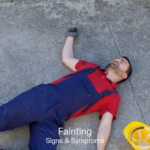Understanding Fractures: Causes, Types, and Treatment
Fractures, commonly known as broken bones, are a prevalent injury affecting millions of people worldwide. They can occur in any bone of the body and can range from minor cracks to severe breaks. Understanding the causes, types, and treatment options for fractures is crucial for effective management and recovery.
Causes of Fractures
Fractures can result from various factors, broadly categorized into traumatic, pathological, and stress-related causes.
- Traumatic Fractures: These are the most common type and occur due to an external force applied to the bone. Car accidents, falls, sports injuries, and direct blows can all cause traumatic fractures. The severity of the fracture depends on the amount of force and the bone’s condition.
- Pathological Fractures: These occur when a bone weakened by disease breaks with minimal or no trauma. Conditions such as osteoporosis, cancer, and osteogenesis imperfecta can make bones fragile and more susceptible to fractures.
- Stress Fractures: These are tiny cracks in the bone caused by repetitive stress or overuse. They are common in athletes and military recruits who undergo intense training, leading to repetitive impact on specific bones.
Types of Fractures
Fractures can be classified based on their characteristics, including the pattern of the break, the number of fragments, and the skin involvement.
- Simple (Closed) Fracture: The bone breaks but does not pierce the skin. This type of fracture is easier to manage and has a lower risk of infection.
- Compound (Open) Fracture: The broken bone pierces the skin, creating an open wound. This type of fracture is more severe, with a higher risk of infection and complications.
- Complete Fracture: The bone breaks into two or more separate pieces. This type of fracture often requires surgical intervention to realign and stabilize the bone.
- Incomplete Fracture: The bone cracks but does not break all the way through. Greenstick fractures, common in children, are an example of incomplete fractures.
- Comminuted Fracture: The bone is shattered into multiple pieces. This type of fracture is often seen in high-impact trauma and can be challenging to treat.
- Transverse Fracture: The break is perpendicular to the bone’s long axis. This type of fracture usually results from a direct blow or a bending force.
- Oblique Fracture: The fracture has an angled pattern across the bone. It often occurs due to a twisting force.
- Spiral Fracture: The break spirals around the bone, usually resulting from a twisting injury. It is common in sports injuries and child abuse cases.
- Compression Fracture: The bone is crushed, often seen in vertebrae. This type of fracture is common in osteoporosis patients.
- Hairline (Stress) Fracture: A thin crack in the bone, often caused by repetitive stress. It is common in weight-bearing bones like the tibia and metatarsals.
Symptoms of Fractures
Common symptoms of fractures include:
- Pain: Immediate and severe pain at the fracture site, often worsening with movement.
- Swelling and Bruising: The area around the fracture becomes swollen and may bruise.
- Deformity: The affected limb may appear out of place or misshapen.
- Loss of Function: Inability to move the affected limb or bear weight.
- Crepitus: A grinding or crackling sensation when moving the bone.
Diagnosis of Fractures
Diagnosis of fractures typically involves a combination of physical examination and imaging studies.
- Physical Examination: The doctor will assess the injured area for pain, swelling, deformity, and loss of function. They may also check for signs of nerve or blood vessel damage.
- Imaging Studies:
- X-rays: The most common imaging tool used to visualize the bone and identify the fracture.
- CT Scans: Provide detailed images of complex fractures, especially in joints and spine.
- MRI: Useful for detecting stress fractures and assessing soft tissue damage.
Treatment of Fractures
Treatment of fractures aims to realign the bone, ensure proper healing, and restore function. The approach varies based on the fracture type, location, and severity.
-
Non-Surgical Treatment:
- Immobilization: Using casts, splints, or braces to keep the bone in place during healing.
- Traction: Applying a steady pulling force to realign the bone, often used for femur fractures.
- Physical Therapy: Rehabilitation exercises to restore strength, flexibility, and function after immobilization.
-
Surgical Treatment:
- Open Reduction and Internal Fixation (ORIF): Surgical realignment of the bone using metal plates, screws, or rods to stabilize the fracture.
- External Fixation: Using an external frame and pins inserted into the bone to hold it in place, often used for severe fractures with soft tissue damage.
- Bone Grafting: Transplanting bone tissue to aid healing in cases of significant bone loss or non-union.
Healing and Recovery
Bone healing involves three stages: inflammation, bone production, and bone remodeling.
- Inflammation: Immediately after the fracture, the body initiates an inflammatory response, forming a blood clot around the broken bone.
- Bone Production: The body replaces the blood clot with a soft callus made of collagen and cartilage, which is later replaced by a hard bony callus.
- Bone Remodeling: The bone continues to remodel, reshaping and strengthening over several months to years.
Recovery time varies based on the fracture type, location, and patient factors such as age and overall health. Proper nutrition, including calcium and vitamin D, is crucial for bone healing. Avoiding smoking and excessive alcohol consumption also promotes faster recovery.
Complications of Fractures
While most fractures heal without complications, some potential issues include:
- Non-Union: Failure of the bone to heal properly.
- Malunion: Healing of the bone in an incorrect position.
- Infection: Particularly in open fractures, where the risk of infection is higher.
- Compartment Syndrome: Increased pressure within a muscle compartment, leading to tissue damage.
- Nerve and Blood Vessel Damage: Injuries to surrounding structures can occur, especially in severe fractures.
Conclusion
Fractures are a common injury with varying degrees of severity and complexity. Understanding the causes, types, and treatment options is essential for effective management and recovery. Whether through non-surgical methods or surgical intervention, timely and appropriate treatment can significantly improve outcomes and restore function. Proper care and rehabilitation are crucial for ensuring optimal healing and preventing complications.





